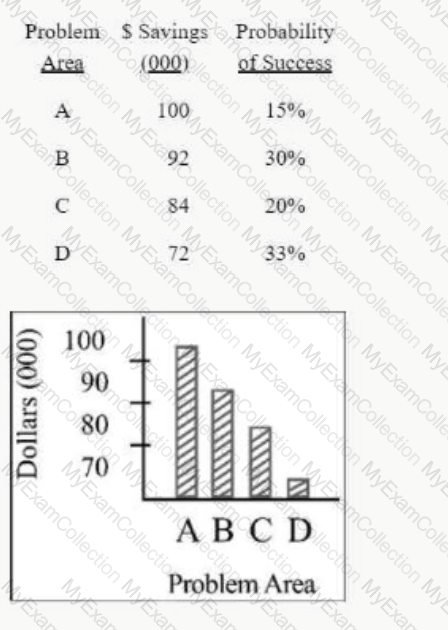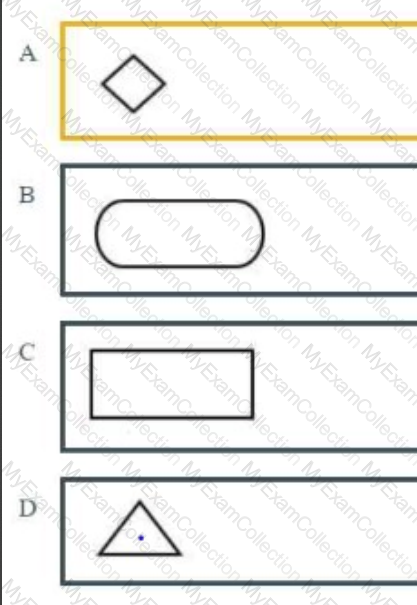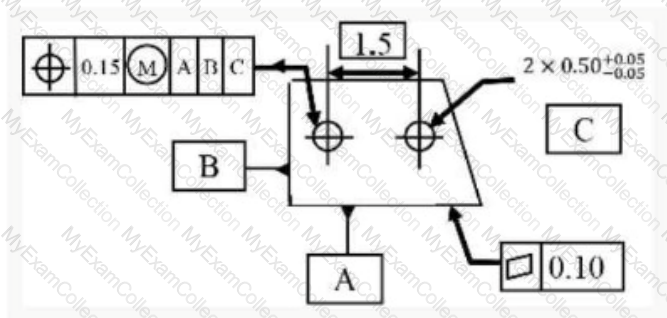If the probability of two cars starting on a cold morning is 0.6 for each car. what is the probability of at least one of the cars starting?
A process that is in statistical control has the following characteristics.
X 122
J? = 2! n = 5
What are the upper and lower control limits for the A'chart of this process?
Which of the following criteria must be considered when a classification of defects system is established?
A test-retest study is performed to a coordinate measuring machine (CMM) using a working standard of 100.00 ± 0.001 mm (95% confidence). The length of the standard is measured 30 rimes. The mean and standard deviation of the measurements are x = 107.883 mm and 5 = 2.497 mm. All of the measurements are made are the same location on the standard and are taken by the same technician, who mounts and dismounts the unit for each measurement.
The precision of the CMM is estimated to be
When requesting "worst case" design analysis, you expect the reliability group to
Which of the following tools can be used to determine the best option from many choices based on their importance and merits?
The following data sets were presented to top management.

Which problem area should be targeted for improvement first?
Which of the following factors has the most influence on the success of quality initiatives?
A company is developing a machine that has many modules. Each module works as intended, but when placed in the machine the system performs at less than desired levels. System changes have further optimized each module, but overall system optimization has continued to decline. This is an example of
A process that is in control has the following characteristics. If the specification is 100 ± 3. what portion of the product is expected to meet specification?
X = 101
R =4 n = 5
H Calculator
An incidental product characteristic is described as a characteristic that
Adjusting machine settings to reduce the effect of ambient temperature changes on the seal strength of a paper package is an example of
Which of the following tools is used to plan for and avoid situations that might interfere with project implementation?
A three-level, two-variable, full factorial experiment is to be run. The minimum number of runs will be
A company decides to adopt a total quality system and has started the process by developing quality policies. Rank in order, from first to last, the rest of the steps that need to be performed to implement this system.
1.Audit the system
2.Determine system requirements
3.Develop a measurement system
4.Perform continuous improvement activities
H Calculator
Reliability prediction is
â… . The process of performance estimation.
â…¡. The process of estimating the probability that a product will perform its intended function for a stated time.
â…¢. The process of telling "how you can get there from here".
Rank in order, from most to least effective, the controls for mitigating risk.
1. Safety devices
2. Design change
3. Training
Which of the following information should be contained in work instructions?
Two advantages of process mapping are the ability to
â… . Visualize the process being described.
â…¡. Discover manufacturing problems only.
â…¢. Discover quality problems only.
IV. Check current processes for duplication or redundancy.
Which of the following symbols indicates a termination point on a flowchart?

A material review board (MRB) gets its authority to act from which of the following functions?
The failure rate model above is used to show a typical relationship of many parts between their failure rate and the time in service. The reliability function for period "B" is BEST represented by
Which of the following types of "voice" is most effective in written communication?
The table below shows the results of inspecting 3,752 items. On the basis of this information, a Pareto chart would show what cumulative percent of nonconformities by the end of the third operation?
Order of OperationNumber of Nonconforming ItemsPercent of Nonconforming ItemsPercent of Nonconformities
1-3729.9%55.0%
2nd1564.2%23.3%
3 rd782.1%11.7%
4*501.3%7.2%
5th200.5%2.8%
Calculator
A production line has job aids that outline, step by step, how to perform the tasks of the job. This is followed by each of the operators working on the line. This is an example of
A company has received many customer complaints due to damaged units being received at the customer's distribution center. After a thorough investigation, it is determined that the units' packaging is insufficient. The company decides that a potential solution is to add reinforcements to the unit packaging to resolve the issue. Which of the following actions is most appropriate?
Which of the following tools is effective for evaluating all possible causes of a problem and isolating the probable causes?
A company uses four components (W. X. Y. and Z) to create its final product. The source and time factors for these components are listed below. What is die critical path for this company's final product?
ComponentSourceAcquisition TimeInstallation TimePredecessor Steps
WInternaln/a4 weeksNone
XExternal5 weeks4 weeksNone
YInternaln/a4 weeksW.X.Z
ZInternaln/a6 weeksNone
When a 24 experiment is fractionated to a 24'5 experiment, the fractioned design is also known as a
An auditor who finds a major discrepancy during a pre-award audit of a new supplier should take which of the following actions?
Competition, safety, warranty, service costs, and public liability are all characteristics of
Rank in order the following items from most effective to least effective when developing materials for a quality training program.
1.Case studies
2.General examples
3.Job related examples
4.Theory
According to ANSI ASQ Z1.4. switching from tightened inspection to normal inspection can occur when how many consecutive lots have been accepted?
A process produces rejects at a rate of 6° o. If multiple samples of 5 are drawn from a population of 100.000. what is the expected number of rejects per sample?
A failure node and effects analysis (FMEA) should be classified in what cost of quality category?
What is the appropriate number of class intervals for the construction of a histogram generated from 36 observations?
When trying to find all possible causes of a problem, which of the following tools would be useful?
â… . Systematic troubleshooting and brainstorming.
â…¡. Fishbone diagrams and histograms.
â…¢. Checklists and scatter diagrams.
â…£. Control charts and graphs.


